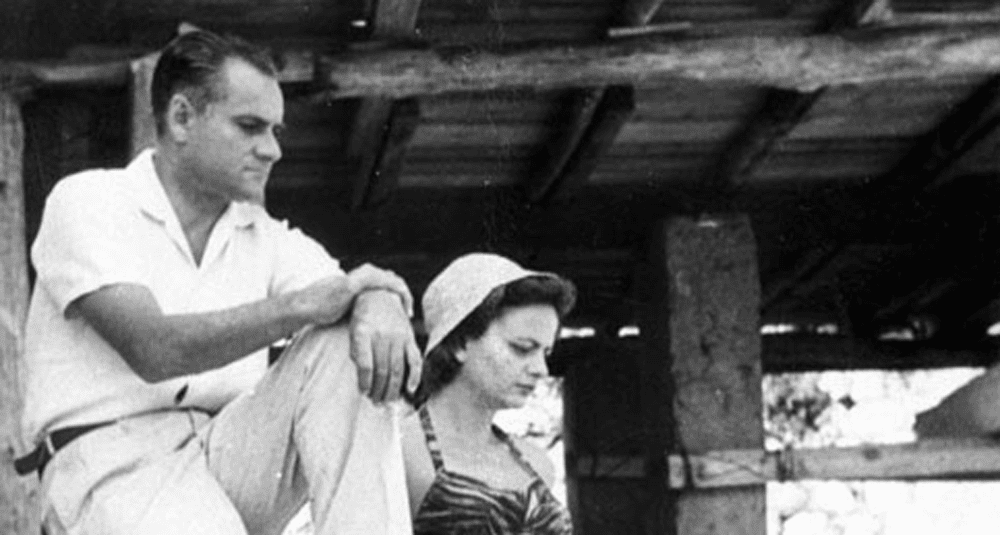Which novel by Alberto Moravia was adapted for the cinema by Jean-Luc Godard in 1963?
Last Updated:
Alberto Moravia’s novel, adapted for cinema in 1963 by Jean-Luc Godard, is entitled Contempt (Il disprezzo in Italian). Published in 1954, this novel explores in depth the themes of love, incommunicability, and the disintegration of couples, subjects that resonate strongly in Moravia’s literary universe and which appealed to Godard for his film adaptation.
Alberto Moravia, an Italian writer born in 1907 and died in 1990, is one of the great figures of 20th-century literature. His novels often deal with the Italian bourgeoisie and its contradictions, highlighting boredom, alienation, and relationship difficulties. Contempt perfectly illustrates these concerns.
In the novel, the plot revolves around Riccardo Molteni, a screenwriter working on a film adaptation of Homer’s Odyssey. His marriage to Emilia gradually deteriorates, and the heart of the story is precisely this slow erosion of the marital bond. Contempt arises from misunderstandings, silences, and the growing distance between the two characters. Moravia subtly depicts the difficulty of communicating in a couple whose desires and expectations no longer match.
In 1963, Jean-Luc Godard, a leading figure of the French New Wave, decided to adapt the novel for the screen. The film, produced by Carlo Ponti and Joseph E. Levine, was shot largely in Italy, notably in the legendary Villa Malaparte in Capri, whose modernist architecture and isolation reinforce the atmosphere of remoteness and rupture.
The film Contempt stars Brigitte Bardot as Camille, the wife of the screenwriter, played by Michel Piccoli. They are joined by Jack Palance as the American producer and Fritz Lang, who plays himself as the legendary filmmaker. This international cast helps to give the film a universal appeal, at the crossroads of cultures.
Godard takes some liberties with Moravia’s novel, but the spirit of the work remains intact: the difficulty of love in the face of social, professional, and material pressures. The film dwells on the deterioration of the couple through minimalist dialogue, heavy silences, and framing marked by the director’s modern aesthetic.
The film’s opening scene, in which Brigitte Bardot and Michel Piccoli engage in an intimate conversation, has become iconic. It illustrates both the sensuality and fragility of the couple, while reflecting Godard’s desire to combine visual poetry and social criticism.
Contempt is now considered one of the great classics of world cinema. It marks the meeting of two worlds: Moravia’s realistic and introspective literature and Godard’s innovative, visually daring, and intellectual cinema. The confrontation between the intimacy of a couple in crisis and the mise en abyme of cinema (through the shooting of a film within the film) makes it a particularly rich work.
Moravia’s novel, with its subtle analysis of human feelings and psychology, lends itself perfectly to this transposition. Godard’s adaptation helped to make the Italian writer known beyond French borders, while offering Brigitte Bardot one of her most memorable roles, far from the glamorous image often associated with her.
Alberto Moravia’s novel, adapted by Jean-Luc Godard in 1963, is entitled Contempt. Through this poignant story of a couple falling apart, Moravia and Godard explore universal themes: misunderstanding, loneliness, and the failure of human relationships. The success of this adaptation, both literary and cinematic, testifies to the timeless power of the story and the relevance of the questions it still raises today.
literature

Which novel by Alberto Moravia was adapted for the cinema by Jean-Luc Godard in 1963?
Answer
Alberto Moravia's novel Contempt was adapted for the cinema in 1963 by Jean-Luc Godard, with Brigitte Bardot and Michel Piccoli in the leading roles.